January
What to Plant
Annuals/Perennials/Wildflowers: Plants that perform well in garden beds and containers during the coolest months include impatiens, geranium, begonia, dianthus, and dusty miller. See
- Ask IFAS: Annuals: https://edis.ifas.ufl.edu/topics/annuals
- Ask IFAS: Perennials: https://edis.ifas.ufl.edu/topics/perennials
- Florida Wildflower Foundation: https://www.flawildflowers.org/.
Herbs: Certain herbs will thrive now that temperatures are cooler, including parsley, tarragon, thyme, dill, and fennel. See
- Ask IFAS: Herbs: https://edis.ifas.ufl.edu/topics/herbs
Vegetables: Many vegetables can be planted this time of year. This is the last month to plant Irish potatoes, beets, broccoli, brussels sprouts, cabbage, cauliflower, collards, kale, mustard, and turnips. See
- Ask IFAS: Vegetable Gardening in Florida: https://edis.ifas.ufl.edu/topics/vegetable_gardening
What to Do
Landscape: It is a good time to plant woody shrubs. Remember “Right Plant/Right Place” and match the mature size with the location. Water frequently to get new plantings off to a good start. See
- The Florida-Friendly Landscaping™ Guide to Plant Selection and Landscape Design: https://ffl.ifas.ufl.edu/media/fflifasufledu/docs/FFL-Plant-Guide_v030624_web.pdf
- Ask IFAS: Shrubs: https://edis.ifas.ufl.edu/topics/shrubs
Trees: Prepare for hurricane season now by checking trees for damaged or weak branches and pruning if needed. Hire an ISA-certified arborist. See
- International Society of Arboriculture: https://www.isa-arbor.com/For-the-Public
- Ask IFAS: Lawn and Garden Care: Pruning: https://edis.ifas.ufl.edu/topics/lawn-and-garden-care-pruning
Irrigation: Water plants if temperatures remain higher than normal and rainfall is scarce. See
- Ask IFAS: Lawn and Garden Care: Irrigation: https://edis.ifas.ufl.edu/topics/lawn_and_garden_care_irrigation
Shrubs and trees: Prune non-spring flowering shrubs and trees this month to improve form.
Arbor Day: Celebrate Florida Arbor Day (the third Friday of January) by planting a tree in your yard or community. See
- Ask IFAS: Arbor Day in Florida: https://edis.ifas.ufl.edu/topics/arbor_day
Crapemyrtle: Remove seed pods, crossing branches, and small twiggy growth to improve the appearance and form of the plant, if desired. Hard pruning is not required. See
- Ask IFAS: Crapemyrtle: https://edis.ifas.ufl.edu/topics/crapemyrtle
Cold protection: Bring sensitive plants like orchids inside if frost or freeze is predicted. Thoroughly water and cover sensitive plants in the landscape 12–24 hours before a freeze. See
- Ask IFAS: Lawn and Garden Care: Cold Protection and Chilling Damage: https://edis.ifas.ufl.edu/topics/lawn-and-garden-cold
Pests: If scale insects are a problem, apply horticultural oil to citrus, shrubs, and deciduous fruit trees while plants are dormant. Apply copper spray to mangoes after bloom for management of Anthracnose disease. See
- Ask IFAS: Lawn and Garden Care: Pest Management: https://edis.ifas.ufl.edu/topics/lawn-garden-pest-management
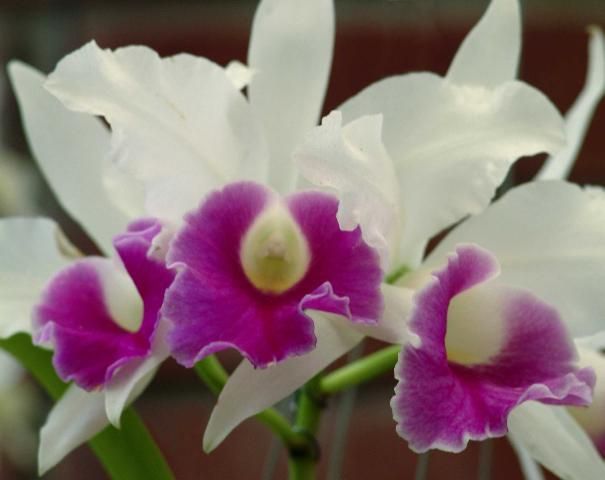
Credit: UF/IFAS
February
What to Plant
Annuals/Perennials/Wildflowers: Good performers in south Florida's mild winter include impatiens, verbena, coleus, and dianthus. See
- Ask IFAS: Annuals: https://edis.ifas.ufl.edu/topics/annuals
- Ask IFAS: Perennials: https://edis.ifas.ufl.edu/topics/perennials
- Florida Wildflower Foundation: https://www.flawildflowers.org/
Groundcovers: Consider replacing areas of grass with drought-tolerant, low-maintenance groundcovers. See
- The Florida-Friendly Landscaping™ Guide to Plant Selection and Landscape Design: https://ffl.ifas.ufl.edu/media/fflifasufledu/docs/FFL-Plant-Guide_v030624_web.pdf
- Ask IFAS: GroundCovers: https://edis.ifas.ufl.edu/topics/ground_covers
Vegetables: Winter vegetable gardening is in full swing. Last month to plant cantaloupes, cucumbers, eggplant, lettuce, peppers, spinach, and tomatoes for a late spring harvest. Protect crops in the unlikely event of frost or freeze. See
- Ask IFAS: Vegetable Gardening in Florida: https://edis.ifas.ufl.edu/topics/vegetable_gardening
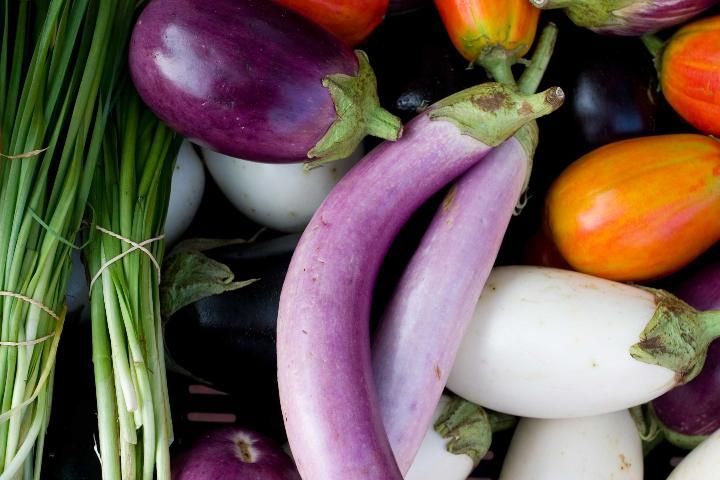
Credit: Tyler Jones, UF/IFAS
What to Do
Lawns: If local ordinances allow, fertilize lawn grasses to improve color or coverage. Choose a fertilizer (not a "weed and feed") with 0% or very little phosphorus unless a soil test indicates the need for it. A fertilizer with controlled-release nitrogen provides longer-lasting results. See
- Ask IFAS: Lawn & Garden Care: Fertilization: https://edis.ifas.ufl.edu/topics/lawn-garden-fertilization
- Florida-Friendly Landscaping™ Program Fertilizer Ordinances App: https://ffl.ifas.ufl.edu/resources/apps/fertilizer-ordinances/
Shrubs and palms: Fertilize shrubs and palms by spreading fertilizer evenly over the soil surface and watering it in. Follow with a fresh layer of mulch to conserve moisture and reduce weeds. Delay pruning any cold-damaged branches until new growth starts. See
- Ask IFAS: Palm Care: https://edis.ifas.ufl.edu/topics/palm-care
Pests: Begin a regular scouting routine to detect warm-season landscape pests like whiteflies, lubber grasshoppers, and Tuttle mealybugs on Zoysia lawns. This allows for early intervention and the use of Integrated Pest Management (IPM) techniques. See
- UF/IFAS Gardening Solutions: Integrated Pest Management (IPM): https://gardeningsolutions.ifas.ufl.edu/care/pests-and-diseases/pests/management/integrated-pest-management/
- EENY-006/IN132: Eastern Lubber Grasshopper: https://edis.ifas.ufl.edu/publication/IN132
Avocados and mangoes: Disease-susceptible varieties of avocado and mango may require applications of copper fungicide. See
- Ask IFAS: Avocado: https://edis.ifas.ufl.edu/topics/avocado
- Ask IFAS: Mango: https://edis.ifas.ufl.edu/topics/mango
Citrus: Fertilize now if not done in January. The frequency and amount of fertilization depend on the age of the tree. See
- Ask IFAS: Home Citrus Culture: https://edis.ifas.ufl.edu/topics/home_citrus_culture
Trees: Don't wait until hurricane season to check your trees. Hire an ISA-certified arborist to do an inspection. See
- International Society of Arboriculture: https://www.isa-arbor.com/For-the-Public
- Ask IFAS: Lawn and Garden Care: Pruning: https://edis.ifas.ufl.edu/topics/lawn-and-garden-care-pruning
March
What to Plant
Annuals/Perennials/Wildflowers: Plant heat-tolerant flowering plants such as pentas, coleus, crossandra, gazania, vinca, gaillardia, caladiums, and zinnia that will last into fall. See
- Ask IFAS: Annuals: https://edis.ifas.ufl.edu/topics/annuals
- Ask IFAS: Perennials: https://edis.ifas.ufl.edu/topics/perennials
- Florida Wildflower Foundation: https://www.flawildflowers.org/
Herbs: In addition to their culinary value, many herbs are ornamental and attract butterflies to the garden. See
- Ask IFAS: Herbs: https://edis.ifas.ufl.edu/topics/herbs
Vegetables: This is the last month to plant arugula, beans, cantaloupe, carrots, celery, sweet corn, endive, okra, radish, squashes, Swiss chard, and watermelon. See
- Ask IFAS: Vegetable Gardening in Florida: https://edis.ifas.ufl.edu/topics/vegetable_gardening
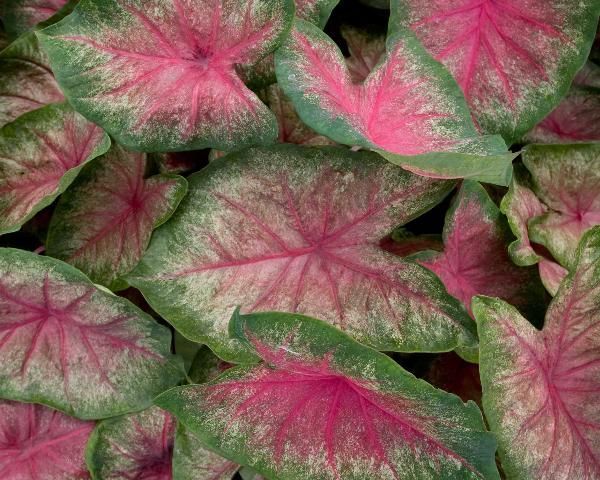
Credit: Tyler Jones, UF/IFAS
What to Do
Shrubs and trees: Prune when new growth begins after the end of the dormant season. Prune after the last flowers fade but before new flower buds set.
Mulch: Add mulch to plant beds to minimize weeds and conserve moisture during dry weather. A ring of mulch around trees will protect them from damage by lawnmowers and line trimmers. See
- Ask IFAS: Lawn and Garden: Mulches: https://edis.ifas.ufl.edu/topics/lawn-garden-mulches
Pests: Monitor landscape plants for insects, especially for the presence of aphids on tender new growth. Insects become more active during warm weather. See
- ENY-298/IN109: Landscape Integrated Pest Management: https://edis.ifas.ufl.edu/publication/IN109
- Ask IFAS: Lawn and Garden Care: Pest Management: https://edis.ifas.ufl.edu/topics/lawn-garden-pest-management
- Ask IFAS: Aphids:https://edis.ifas.ufl.edu/topics/aphids
Fertilize: Fertilize lawns, palms, and ornamental shrubs if not done last month, but only if local ordinances allow See
- Ask IFAS: Palm Care: https://edis.ifas.ufl.edu/topics/palm-care
- Ask IFAS: Lawn & Garden Care: Fertilization: https://edis.ifas.ufl.edu/topics/lawn-garden-fertilization
- Florida-Friendly Landscaping™ Program Fertilizer Ordinances App: https://ffl.ifas.ufl.edu/resources/apps/fertilizer-ordinances/
Lawns: Identify damaging insects and spot treat early to prevent widespread damage. Turfgrass Pest Insects: https://edis.ifas.ufl.edu/topics/insect_management_in_your_florida_lawn. Apply a preemergence weed killer (not a "weed and feed") to lawns to prevent germination of warm-season weed seeds. Apply when temperatures rise to 65°F for 4–5 days. Timing is important for good control. See:
- Ask IFAS: Insect Management in Your Florida Lawn: https://edis.ifas.ufl.edu/topics/insect_management_in_your_florida_lawn
- Ask IFAS: Lawn and Garden Care: Weed Management: https://edis.ifas.ufl.edu/topics/lawn-garden-weed-management
Tropical and subtropical fruits: Add variety and interest to the landscape and meals with exotic fruits. See
Citrus: Squiggly lines in the younger leaves of citrus trees indicate Citrus Leaf Miner (CLM) insects, but there is seldom a need to manage them. Natural enemies in Florida usually keep them in check. See
- HS876/HS141: Citrus Problems in the Home Landscape: https://edis.ifas.ufl.edu/publication/HS141
April
What to Plant
Annuals/Perennials/Wildflowers: Liven up plant beds with heat-tolerant bloomers such as cannas, coleus, vinca, and portulaca. See
- Ask IFAS: Annuals: https://edis.ifas.ufl.edu/topics/annuals
- Ask IFAS: Perennials: https://edis.ifas.ufl.edu/topics/perennials
- Florida Wildflower Foundation: https://www.flawildflowers.org/
Herbs: Some herbs to plant now include basil and mint. See
- Ask IFAS: Herbs: https://edis.ifas.ufl.edu/topics/herbs
Vegetables: Beans, Chinese cabbage, Southern peas, and sweet potatoes can still be planted. Mulch beds well and monitor irrigation if the weather is dry. See
- Ask IFAS: Vegetable Gardening in Florida: https://edis.ifas.ufl.edu/topics/vegetable_gardening
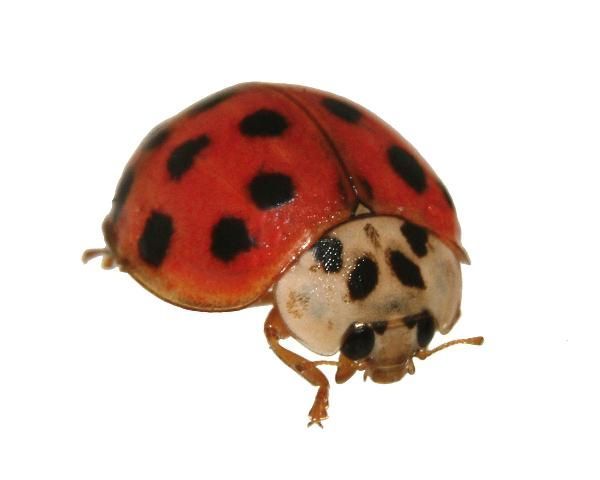
Credit: UF/IFAS
What to Do
Plant for Butterflies: Plant flowers of different colors, shapes, sizes, and blooming seasons to provide nectar for adult butterflies and provide host plants for their caterpillars. See
- Ask IFAS: Butterfly/Pollinator Gardening: https://edis.ifas.ufl.edu/topics/butterfly_pollinator_gardening
Pests: Monitor insect activity and learn which bugs damage plants and which do not. See
- Ask IFAS: Lawn and Garden Care: Pest Management: https://edis.ifas.ufl.edu/topics/lawn-garden-pest-management
Beneficial insects: Identify and conserve the good guys! Some insects play a key role in pest management and should be encouraged in your yard! See
- Ask IFAS: Beneficial Insects: https://edis.ifas.ufl.edu/topics/beneficial_insects
Tomatoes: Watch for pests, disease, and nutritional disorders on developing tomato plants. See
- Ask IFAS: Tomato Gardening: https://edis.ifas.ufl.edu/topics/tomato-gardening
Palms: Identify and treat environmental and nutritional disorders in palm trees. See
- Ask IFAS: Palm Care: https://edis.ifas.ufl.edu/topics/palm-care
Oleanders: Inspect chewed or ragged leaves for oleander caterpillars at work. See
- Ask IFAS: Oleander Pest Management: https://edis.ifas.ufl.edu/topics/oleander-pest-management
Fruits: Propagate fruit crops by air layering and grafting. See
- HS1349/HS1349: Tropical and Subtropical Fruit Propagation: https://edis.ifas.ufl.edu/publication/HS1349
Divide: Clumps of bulbs, ornamental grasses, or herbaceous perennials can be divided now to expand or rejuvenate garden beds or to pass along to friends. See
- Ask IFAS: Bulbs for Florida: https://edis.ifas.ufl.edu/topics/bulbous_flowers
- Ask IFAS: Perennials: https://edis.ifas.ufl.edu/topics/perennials
Shrubs: Choose from a wide variety of shrubs to add to the landscape now. Remember “Right Plant/Right Place” and match the mature size with the location. See
- The Florida-Friendly Landscaping™ Guide to Plant Selection and Landscape Design: https://ffl.ifas.ufl.edu/media/fflifasufledu/docs/FFL-Plant-Guide_v030624_web.pdf
- Ask IFAS: Shrubs: https://edis.ifas.ufl.edu/topics/shrubs
Frangipani/Plumeria Rust: This common fungus disease is active during warm months and first appears as orange-yellow pustules on the backsides of leaves. Remove and dispose of all infected leaves and any on the ground. Rust will not kill the plant but can defoliate it.
May
What to Plant
Annuals/Perennials/Wildflowers: Plants that can take summer heat include coleus, salvia, torenia, wax begonia, vinca, crossandra, ornamental pepper. See
- Ask IFAS: Annuals: https://edis.ifas.ufl.edu/topics/annuals
- Ask IFAS: Perennials: https://edis.ifas.ufl.edu/topics/perennials
- Florida Wildflower Foundation: https://www.flawildflowers.org/
Herbs: Plant heat-loving herbs, including basil, Mexican tarragon, ginger, summer savory, and rosemary. See
- Ask IFAS: Herbs: https://edis.ifas.ufl.edu/topics/herbs
Vegetables: Sweet potatoes, boniato, hot peppers, and tropical "spinach" such as Sisso, Malabar, and New Zealand can be planted now. See
- Ask IFAS: Vegetable Gardening in Florida: https://edis.ifas.ufl.edu/topics/vegetable_gardening
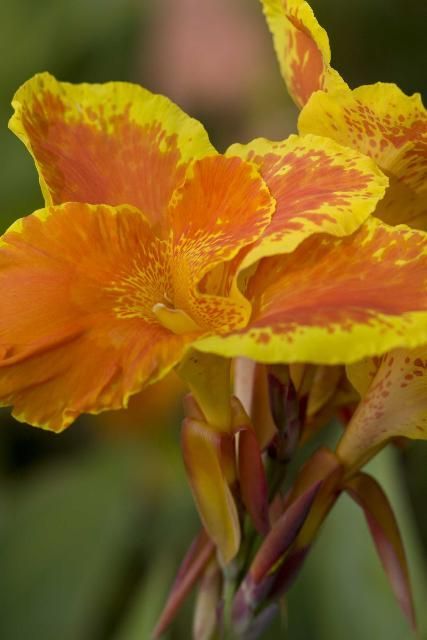
Credit: UF/IFAS
What to Do
Pests: Watch for thrips, scale, and mites on ornamental plants because they become more active in warm weather. See
- Ask IFAS: Lawn and Garden Care: Pest Management: https://edis.ifas.ufl.edu/topics/lawn-garden-pest-management
Gardenias and ixora: Distinguish between the normal yellowing of older leaves and the yellowing of new growth, which usually indicates a micronutrient deficiency. See
- Cir1098/EP338: Gardenias at a Glance: https://edis.ifas.ufl.edu/ep338
Oleanders: Inspect chewed or ragged leaves for oleander caterpillars at work. See
- Ask IFAS: Oleander Pest Management: https://edis.ifas.ufl.edu/topics/oleander-pest-management
Lawns: Mow at the recommended height; mowing too short encourages weeds. Watch for damage from chinch bugs in St. Augustinegrass and begin scouting for newly hatched mole crickets in bahiagrass lawns. Prevent or minimize disease by following proper cultural practices when caring for lawns. See
- Ask IFAS: Turfgrass Diseases: https://edis.ifas.ufl.edu/topics/turfgrass-diseases
- Ask IFAS: Insect Management in Your Florida Lawn: https://edis.ifas.ufl.edu/topics/insect_management_in_your_florida_lawn
Tomatoes: Watch for pests, disease, and nutritional disorders on tomato plants. See
- Ask IFAS: Home Tomato Gardening: https://edis.ifas.ufl.edu/topics/tomato-gardening
Trees: Prepare for hurricane season by checking trees for damaged or weak branches and pruning if needed. Hire an ISA-certified arborist. See
- International Society of Arboriculture: International Society of Arboriculture > For the Public (isa-arbor.com)
- Ask IFAS: Lawn and Garden Care: Pruning: https://edis.ifas.ufl.edu/topics/lawn-and-garden-care-pruning
June
What to Plant
Annuals/Perennials/Wildflowers: Flowering plants that can take full sun during the increasingly sizzling summer months include portulaca, vinca, pentas, and some coleus. See
- Ask IFAS: Annuals: https://edis.ifas.ufl.edu/topics/annuals
- Ask IFAS: Perennials: https://edis.ifas.ufl.edu/topics/perennials
- Florida Wildflower Foundation: https://www.flawildflowers.org/
Palms: Summer's warm, rainy months are the perfect time to plant palms. Make sure not to cover the trunk with soil. See
- CIR1047/EP001: Transplanting Palms in the Landscape: https://edis.ifas.ufl.edu/publication/EP001
Herbs: Plant heat-loving herbs, including basil, ginger, cilantro, garlic chives, Cuban oregano, turmeric, Mexican tarragon, lemon grass, and rosemary. See
- Ask IFAS: Herbs: https://edis.ifas.ufl.edu/topics/herbs
Vegetables: Plant tropical vegetables, such as pigeon peas, boniato, calabaza, and chayote this month. See
- Ask IFAS: Tropical Vegetables: https://edis.ifas.ufl.edu/topics/tropical-vegetables
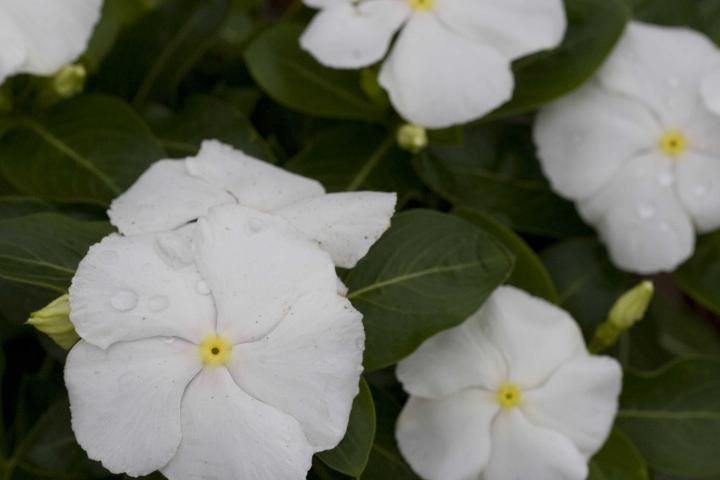
Credit: Tyler Jones, UF/IFAS
What to Do
Pests: Monitor the landscape and garden weekly for harmful insects. Knowing which plants are frequently attacked can aid in early detection. See
- Ask IFAS: Lawn and Garden Care: Pest Management: https://edis.ifas.ufl.edu/topics/lawn-garden-pest-management
Irrigation: Watch for drought stress and water as needed if rainfall has been spotty. Focus on new plantings and follow watering restrictions. When rains begin, shut down the irrigation system. See
- Ask IFAS: Lawn and Garden Care: Irrigation: https://edis.ifas.ufl.edu/topics/lawn_and_garden_care_irrigation
Propagation: Produce more plants by air layering, grafting, division, or cuttings. See
- Ask IFAS: Lawn and Garden Plants: Seeds and Propagation: https://edis.ifas.ufl.edu/topics/lawn-garden-propagation
Palms and cycads: June kicks off Florida's hurricane season, but so-called "hurricane" or "pineapple" pruning is not recommended. For information on the correct way to prune palms See
- Ask IFAS: Palm Care: https://edis.ifas.ufl.edu/topics/palm-care
Pruning: Lightly prune summer-flowering shrubs, like hibiscus, oleander, and ixora, during the warmer months to increase blooming. See
- Ask IFAS: Lawn and Garden Care: Pruning: https://edis.ifas.ufl.edu/topics/lawn-and-garden-care-pruning
Fertilizer bans: Numerous municipalities in South Florida prohibit the application of fertilizer to lawns and/or landscape plants during the summer rainy season (June–September). Does an ordinance exist in your area? See
- Florida-Friendly Landscaping™ Program Fertilizer Ordinances App: https://ffl.ifas.ufl.edu/resources/apps/fertilizer-ordinances/
Lawns: Check frequently for damaged areas and keep insects in check with prompt treatment. Trouble-shoot yellow and brown lawn patches for chinch bugs, disease, or lack of water. Take time to determine the cause so your remedy is effective. Rejuvenate areas where grass does not grow well by replacing it with versatile groundcovers. See
- Ask IFAS: Lawn and Garden Pest Insects: https://edis.ifas.ufl.edu/topics/garden_pest_insects
- The Florida-Friendly Landscaping™ Guide to Plant Selection and Landscape Design: https://ffl.ifas.ufl.edu/media/fflifasufledu/docs/FFL-Plant-Guide_v030624_web.pdf
- Ask IFAS: Ground Covers: https://edis.ifas.ufl.edu/topics/ground_covers
Soil solarization: Clean up your vegetable garden and use summer heat to solarize the soil for fall vegetable planting. It takes 4–6 weeks to kill weeds, disease, and nematodes, so start now. See
- Ask IFAS: Soil Solarization: https://edis.ifas.ufl.edu/topics/soil_solarization
Lightning safety: Be safe outdoors during summer storms. See
- Ask IFAS: Lightning: https://edis.ifas.ufl.edu/topics/lightning
July
What to Plant
Annuals/Perennials/Wildflowers: Summer bloomers include vinca, coleus, pentas, gaillardia, blue daze, salvias, and ornamental pepper. See
- Ask IFAS: Annuals: https://edis.ifas.ufl.edu/topics/annuals
- Ask IFAS: Perennials: https://edis.ifas.ufl.edu/topics/perennials
- Florida Wildflower Foundation: https://www.flawildflowers.org/
Herbs: While summer is too hot to start most herbs from seeds, others, such as oregano and mint, do well if started from small plants. See
- Ask IFAS: Herbs: https://edis.ifas.ufl.edu/topics/herbs
Vegetables: Plant tropical vegetables, such as boniato, calabaza, and chayote this month. See
- Ask IFAS: Tropical Vegetables: https://edis.ifas.ufl.edu/topics/tropical-vegetables
Palms: Continue planting palms while the rainy season is in full swing. Support large palms with braces for 6–8 months after planting. Never drive nails directly into a palm trunk. See
- CIR1047/EP001: Transplanting Palms in the Landscape: https://edis.ifas.ufl.edu/publication/EP001
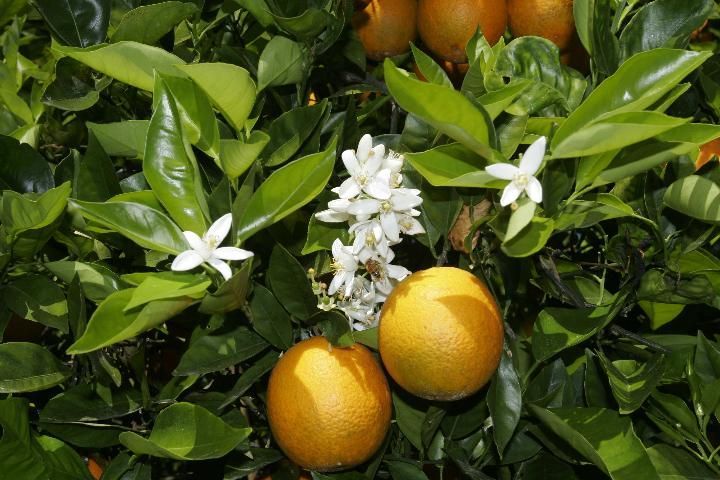
Credit: UF/IFAS
What to Do
Trees: Hurricane season is upon us, but don't "hurricane" or "pineapple" prune palms. For all tree and palm pruning, hire an ISA-certified arborist. See
- International Society of Arboriculture: International Society of Arboriculture > For the Public (isa-arbor.com)
- Ask IFAS: Lawn and Garden Care: Pruning: https://edis.ifas.ufl.edu/topics/lawn-and-garden-care-pruning
Lawns: Determine the cause of any lawn problems before taking action. If an insect is the culprit, treat only the affected area. Rule out disease or sprinkler malfunction. See
- Ask IFAS: Insect Management in Your Florida Lawn: https://edis.ifas.ufl.edu/topics/insect_management_in_your_florida_lawn
Fertilizer Bans: Numerous Florida municipalities prohibit applying fertilizer to lawns and/or landscape plants during the summer rainy season (June–September). Does such an ordinance exist in your area? See
- Florida-Friendly Landscaping™ Program Fertilizer Ordinances App: https://ffl.ifas.ufl.edu/resources/apps/fertilizer-ordinances/
Vegetable garden: Use summer heat to solarize the soil for fall vegetable planting. It takes 4–6 weeks to kill weeds, disease, and nematodes, so start now. See
- Ask IFAS: Soil Solarization: https://edis.ifas.ufl.edu/topics/soil_solarization
Irrigation: Summer rains typically provide ample water for plants. Over-irrigating can lead to root rot and waste water and money. Install an inexpensive rain shutoff device that will override an irrigation system when it rains. If one is already installed, check that it is operating properly. See
- Ask IFAS: Lawn and Garden Care: Irrigation: https://edis.ifas.ufl.edu/topics/lawn_and_garden_care_irrigation
Pests on ornamental plants: Warm months often mean more insect pests. Inspect plants often and intervene early. See
- Ask IFAS: Lawn and Garden Care: Pest Management: https://edis.ifas.ufl.edu/topics/lawn-garden-pest-management
Tropical fruit trees: Check for damage to fruit or leaves and take action to minimize the effect of insects and/or disease on developing fruit or the overall health of the tree. See
- Ask IFAS: Tropical Fruit: https://edis.ifas.ufl.edu/topics/tropical_fruit
August
What to Plant
Annuals/Perennials/Wildflowers: The hottest days of summer limit planting to heat-tolerant vinca, coleus, pentas, salvia, and celosia. Remove spent blooms, cut back, and fertilize flowering plants to extend the bloom season. See
- Ask IFAS: Annuals: https://edis.ifas.ufl.edu/topics/annuals
- Ask IFAS: Perennials: https://edis.ifas.ufl.edu/topics/perennials
- Florida Wildflower Foundation https://www.flawildflowers.org/
Herbs: Herbs that are best started from plants (not seeds) include ginger, Mexican tarragon, turmeric, and rosemary. See
- Ask IFAS: Herbs: https://edis.ifas.ufl.edu/topics/herbs
Vegetables: Start seeds of eggplant, okra, peppers, pumpkin, squashes, and tomatoes for the fall garden. See
- Ask IFAS: Vegetable Gardening in Florida: https://edis.ifas.ufl.edu/topics/vegetable_gardening
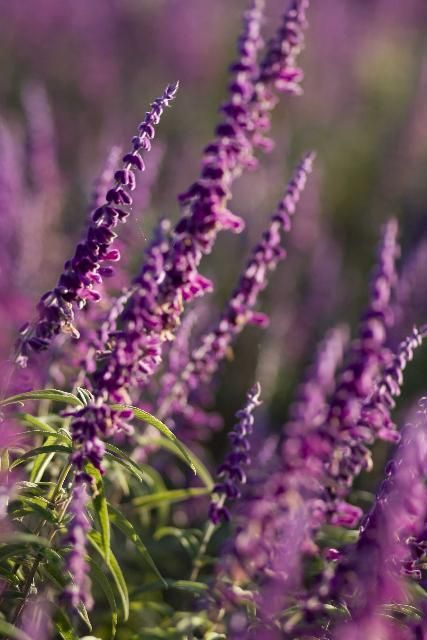
Credit: Tyler Jones, UF/IFAS
What to Do
Palms: Check older fronds for yellowing, which may indicate a magnesium or potassium deficiency. Apply an appropriate palm fertilizer if fertilizer ordinances permit. See
- Ask IFAS: Palm Care: https://edis.ifas.ufl.edu/topics/palm-care
- Florida-Friendly Landscaping™ Program Fertilizer Ordinances App: https://ffl.ifas.ufl.edu/resources/apps/fertilizer-ordinances/
Vegetables: Solarize the vegetable garden for 4–6 weeks in preparation for fall planting if not done in July. See
- Ask IFAS: Soil Solarization: https://edis.ifas.ufl.edu/topics/soil_solarization
Ornamental plants: Rapid growth and leaching rains may result in nutrient deficiencies in some plants. Fertilize to correct if ordinances permit (see below). See
- Ask IFAS: Nutrient Deficiencies (Landscape Plants): https://edis.ifas.ufl.edu/topics/lawn-garden-nutrient-deficiencies
- Ask IFAS: Lawn & Garden Care: Fertilization: https://edis.ifas.ufl.edu/topics/lawn-garden-fertilization
- Florida-Friendly Landscaping™ Program Fertilizer Ordinances App: https://ffl.ifas.ufl.edu/resources/apps/fertilizer-ordinances/
September
What to Plant
Annuals/Perennials/Wildflowers: If summer beds need refreshing, try scarlet sage, coleus, pentas, celosia, mandevilla, and wax begonia for color into fall. See
- Ask IFAS: Annuals: https://edis.ifas.ufl.edu/topics/annuals
- Ask IFAS: Perennials: https://edis.ifas.ufl.edu/topics/perennials
- Florida Wildflower Foundation: https://www.flawildflowers.org/
Herbs: Plant herbs that tolerate the warm temperatures of early fall, such as Mexican tarragon, mint, rosemary, and basil. See
- Ask IFAS: Herbs: https://edis.ifas.ufl.edu/topics/herbs
Vegetables: September opens the door for more vegetables to plant. See
- Ask IFAS: Vegetable Gardening in Florida: https://edis.ifas.ufl.edu/topics/vegetable_gardening
Shrubs: Consider placing native shrubs, like beautyberry, marlberry, firebush, and dahoon holly, where you can view the birds that enjoy them. See
- The Florida-Friendly Landscaping™ Guide to Plant Selection and Landscape Design: https://ffl.ifas.ufl.edu/media/fflifasufledu/docs/FFL-Plant-Guide_v030624_web.pdf
- Ask IFAS: Shrubs: https://edis.ifas.ufl.edu/topics/shrubs
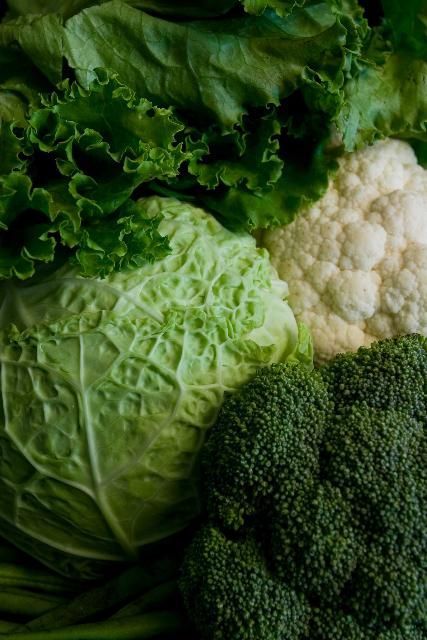
Credit: Tyler Jones, UF/IFAS
What to Do
Lawns: Continue to monitor the lawn for signs of insect damage. Fall armyworms, chinch bugs, mole crickets, and sod webworms are still active this month. See
- Ask IFAS: Lawn and Garden Care: Pest Management: https://edis.ifas.ufl.edu/topics/lawn-garden-pest-management
Fertilizer bans: Numerous Florida municipalities prohibit applying fertilizer to lawns and/or landscape plants during certain months. Does such an ordinance exist in your area? See
- Florida-Friendly Landscaping™ Program Fertilizer Ordinances App: https://ffl.ifas.ufl.edu/resources/apps/fertilizer-ordinances/
Vegetable gardens: Prepare the fall vegetable garden if not done in August. Using transplants from your local garden center will get the garden off to a fast start, but seeds provide a wider variety from which to choose. See
- Ask IFAS: Vegetable Gardening in Florida: https://edis.ifas.ufl.edu/topics/vegetable_gardening
Divide and replant: Some clumping plants may need dividing. Add organic matter to planting beds and monitor water needs during establishment. See
- Ask IFAS: Lawn and Garden Plants: Seeds and Propagation: https://edis.ifas.ufl.edu/topics/lawn-garden-propagation
Irrigation: Check that irrigation systems are providing good coverage and operating properly before summer rains taper off. See
- Ask IFAS: Lawn and Garden Care: Irrigation: https://edis.ifas.ufl.edu/topics/lawn_and_garden_care_irrigation
Citrus: Fertilize citrus with a balanced fertilizer either this month or in October. Use controlled-release nitrogen because rain will not leach it from the soil too quickly. See
- Ask IFAS: Home Citrus Culture: https://edis.ifas.ufl.edu/topics/home_citrus_culture
- Florida-Friendly Landscaping™ Program Fertilizer Ordinances App: https://ffl.ifas.ufl.edu/resources/apps/fertilizer-ordinances/
October
What to Plant
Annuals/Perennials/Wildflowers: Even though temperatures are still warm, begin planting for the cooler months ahead. Impatiens, alyssum, and dianthus are good choices for the fall/winter garden. See
- Ask IFAS: Annuals: https://edis.ifas.ufl.edu/topics/annuals
- Ask IFAS: Perennials: https://edis.ifas.ufl.edu/topics/perennials
- Florida Wildflower Foundation: https://www.flawildflowers.org/
Herbs: A wide range of herbs can be planted from seed or transplants this month. Some to try include dill, fennel, parsley, and cilantro. See
- Ask IFAS: Herbs: https://edis.ifas.ufl.edu/topics/herbs
Vegetables: Easy crops that can be grown now include beans, broccoli, carrots, collards, lettuce, green onions, peppers, radishes, spinach, and tomatoes. See
- Ask IFAS: Vegetable Gardening in Florida: https://edis.ifas.ufl.edu/topics/vegetable_gardening
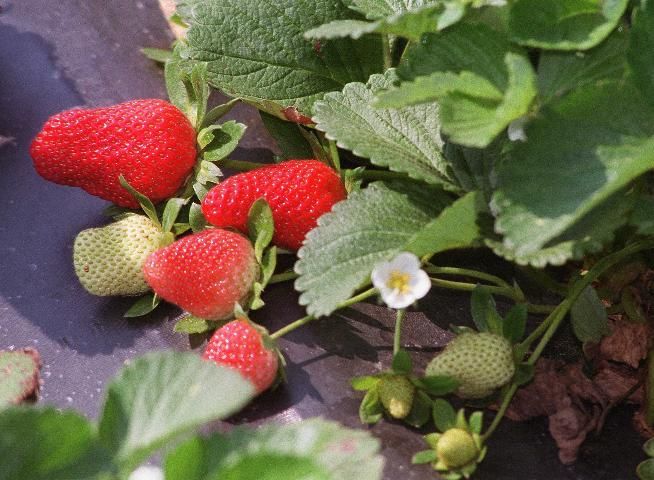
Credit: UF/IFAS
What to Do
Frangipani/Plumeria Rust: This disease causes yellow spots and premature leaf drop but does not affect the long-term health of the plant. Removing, raking, and disposing of infected leaves may slow the infection.
Lawns: Control winter weeds in lawns before they appear. Preemergence herbicides must be applied at the right time to be effective. Apply when nighttime temperatures are 55°F–60°F for 4–5 days. Mow lawngrass at the recommended height; mowing too short encourages weeds and stresses the turf. See
- Ask IFAS: Lawn and Garden Care: Weed Management: https://edis.ifas.ufl.edu/topics/lawn-garden-weed-management
Ornamental trees and shrubs: Under-performing plants might need fertilizer. This is the last month of the year to fertilize shrubs and trees. Controlled-release fertilizer provides nutrients over a longer period. See
- Ask IFAS: Lawn & Garden Care: Fertilization: https://edis.ifas.ufl.edu/topics/lawn-garden-fertilization
Lawn fertilization: Fertilize lawns if needed and permitted by local ordinances. See
- Ask IFAS: Lawn & Garden Care: Fertilization: https://edis.ifas.ufl.edu/topics/lawn-garden-fertilization
- Florida-Friendly Landscaping™ Program Fertilizer Ordinances App: https://ffl.ifas.ufl.edu/resources/apps/fertilizer-ordinances/
Strawberries: Prepare beds and set strawberry plants this month. Strawberries also make a colorful and tasty container planting. Either way, water daily until plants are established. See
- HS1154/HS403: Growing Strawberries in the Florida Home Garden: https://edis.ifas.ufl.edu/publication/HS403
Palms: Palms have unique nutritional needs. Select a fertilizer that contains controlled-release nitrogen, potassium, and magnesium. See
- Ask IFAS: Palm Care: https://edis.ifas.ufl.edu/topics/palm-care
Oleanders: Control oleander caterpillars by pruning off infested leaves or spraying with BT (Bacillus thuringiensis). See
- Ask IFAS: Oleander Pest Management: https://edis.ifas.ufl.edu/topics/oleander-pest-management
November
What to Plant
Annuals/Perennials/Wildflowers: Create a display of fall colors with cool-season plants. Some examples include impatiens, verbena, petunia, salvia, and cape daisy. See
- Ask IFAS: Annuals: https://edis.ifas.ufl.edu/topics/annuals
- Ask IFAS: Perennials: https://edis.ifas.ufl.edu/topics/perennials
- Florida Wildflower Foundation: https://www.flawildflowers.org/
Herbs: Continue planting herbs from seeds or plants. Some herbs that prefer the cooler, dryer weather include cilantro, dill, fennel, parsley, sage, and thyme. See
- Ask IFAS: Herbs: https://edis.ifas.ufl.edu/topics/herbs
Vegetables: Lots of choices exist for November, including beans, broccoli, kale, snow/English peas, and strawberries. See
- Ask IFAS: Vegetable Gardening in Florida: https://edis.ifas.ufl.edu/topics/vegetable_gardening
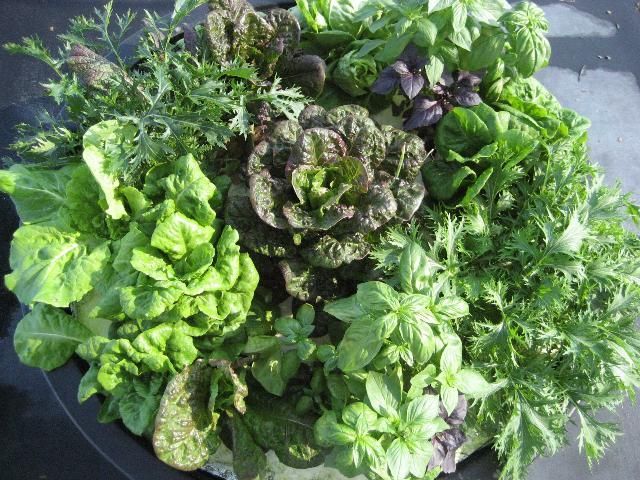
Credit: UF/IFAS
What to Do
Frangipani/Plumeria Rust: This disease causes yellow spots and premature leaf drop but does not affect the long-term health of the plant. Removing, raking, and disposing of infected leaves may slow the infection.
Perennials: Divide and replant overgrown perennials now so that they establish before the coolest weather arrives. See
- Ask IFAS: Perennials: https://edis.ifas.ufl.edu/topics/perennials
Lawns: As temperatures cool, watch for lawn diseases. Cultural practices such as reducing nitrogen fertilizer and irrigation are key to managing Large Patch disease. Lethal Viral Necrosis (LVN), a virus disease of St. Augustinegrass, begins to appear when the temperature dips to 65°F and below. See
- Lethal Viral Necrosis of St. Augustinegrass: UF/IFAS Extension Palm Beach County: https://discover.pbc.gov/coextension/horticulture/Pages/Lethal-Necrosis.aspx
Scale insects: Take advantage of lower temperatures to apply horticultural oil sprays to control scale insects. See
- Ask IFAS: Lawn and Garden Care: Pest Management: https://edis.ifas.ufl.edu/topics/lawn-garden-pest-management
Irrigation: Turn off systems and water only if needed. Plants need less supplemental watering in cooler weather. See
- Ask IFAS: Lawn and Garden Care: Irrigation: https://edis.ifas.ufl.edu/topics/lawn_and_garden_care_irrigation
December
What to Plant
Annuals/Perennials/Wildflowers: To add color to the winter garden, plant masses of begonia, impatiens, petunias, alyssum, and geranium. See
- Ask IFAS: Annuals: https://edis.ifas.ufl.edu/topics/annuals
- Ask IFAS: Perennials: https://edis.ifas.ufl.edu/topics/perennials
- Florida Wildflower Foundation: https://www.flawildflowers.org/
Bulbs: Amaryllis is a popular plant for the holiday season. It can be forced to bloom now or planted outdoors for spring blooms. See
- Ask IFAS: Amaryllis: https://edis.ifas.ufl.edu/topics/amaryllis
- Ask IFAS: Bulbs for Florida: https://edis.ifas.ufl.edu/topics/bulbous_flowers
Herbs: Plant herbs that thrive in cool weather. Some examples include parsley, thyme, sage, dill, fennel, and cilantro. See
- Ask IFAS: Herbs: https://edis.ifas.ufl.edu/topics/herbs
Vegetables: Reliable cool-season vegetables to plant this month include broccoli, carrots, kale, green onions, and others. See
- Ask IFAS: Vegetable Gardening in Florida: https://edis.ifas.ufl.edu/topics/vegetable_gardening
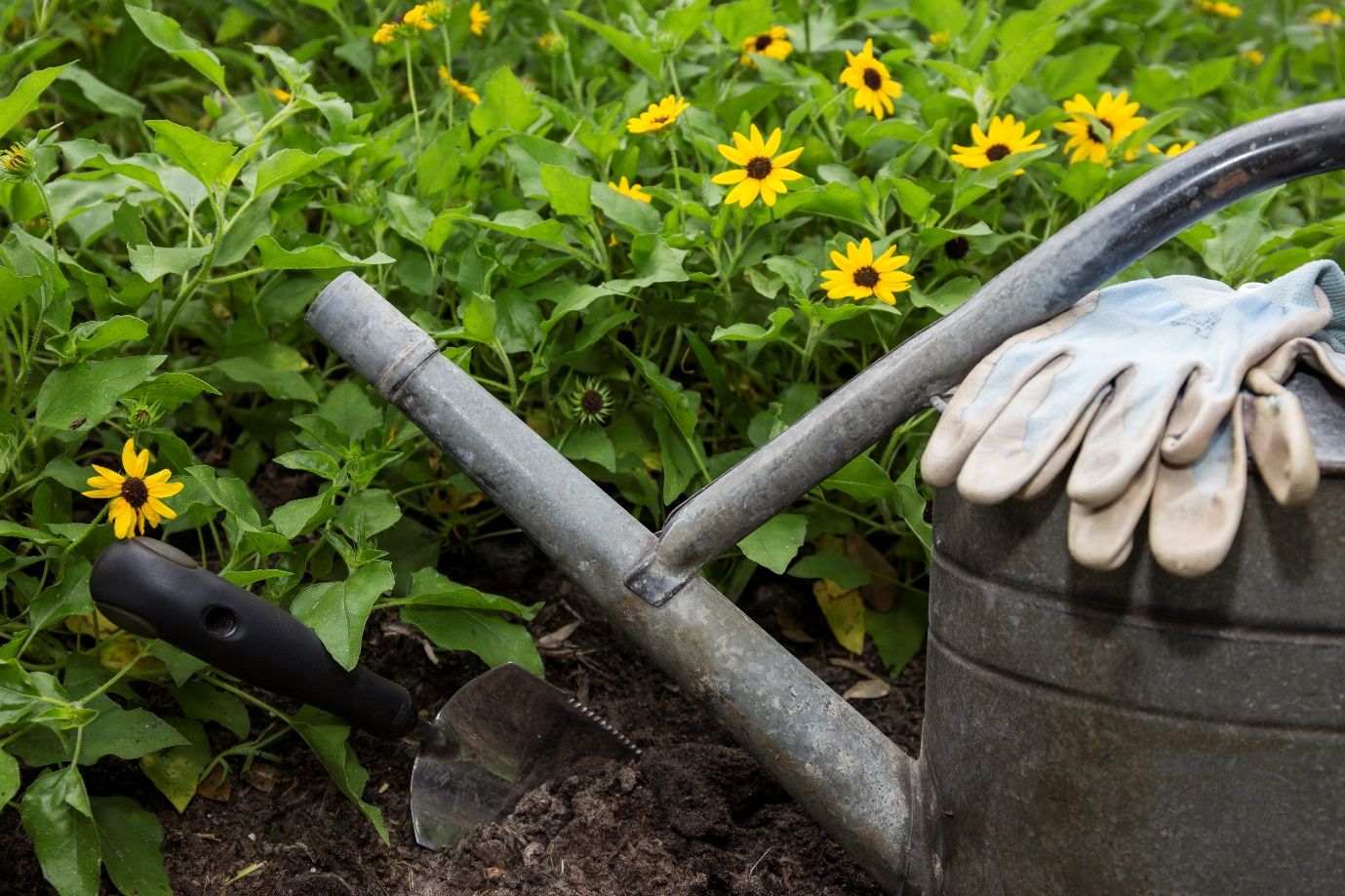
Credit: Tyler Jones, UF/IFAS
What to Do
Frangipani/Plumeria Rust: This disease causes yellow spots and premature leaf drop but does not affect the long-term health of the plant. Removing, raking, and disposing of infected leaves may slow the infection.
Irrigation: Irrigate if the weather has been warm and dry. Monitor plants for signs of stress and water only as needed. See
- Ask IFAS: Lawn and Garden Care: Irrigation: https://edis.ifas.ufl.edu/topics/lawn_and_garden_care_irrigation
Lawn Disease: Continue monitoring for Lethal Viral Necrosis (LVN) and Large Patch fungal disease until May. Proper cultural practices are key for control. See
- Lethal Viral Necrosis of St. Augustinegrass: UF/IFAS Extension Palm Beach County: https://discover.pbc.gov/coextension/horticulture/Pages/Lethal-Necrosis.aspx
Houseplants: Inspect regularly for pests on indoor plants. Keep in mind that plant-specific temperature, light, and humidity are key to ensuring that indoor plants thrive. See
- Ask IFAS: House Plants: https://edis.ifas.ufl.edu/topics/house_plants
- Solutions for Your Life: Florida House Plants: https://sfyl.ifas.ufl.edu/lawn-and-garden/florida-house-plants/
Soil test: Consider performing a soil test if plants do not perform as desired or if new plantings are planned. See
- SL 281/SS494: Soil Sampling and Testing for the Home Landscape or Vegetable Garden: https://edis.ifas.ufl.edu/publication/SS494
Compost/mulch: Use fallen leaves and other plant debris as mulch and/or as the carbon ingredient needed for successful composting. See
- Ask IFAS: Composting: https://edis.ifas.ufl.edu/topics/composting
- Ask IFAS: Lawn and Garden: Mulches: https://edis.ifas.ufl.edu/topics/lawn-garden-mulches
Landscape and garden pests: Continue monitoring and treat as needed. While cooler weather means fewer pests, some populations increase at this time of year. See
- Ask IFAS: Lawn and Garden Care: Pest Management: https://edis.ifas.ufl.edu/topics/lawn-garden-pest-management
Holiday trees: Consider enjoying a live southern red cedar and then plant it in the landscape when the holidays are over. See
- ENH-485/ST326: Juniperus silicicola: Southern Redcedar: https://edis.ifas.ufl.edu/publication/ST326
What to Do Every Month
- Adjust irrigation based on rainfall: Ask IFAS: Lawn and Garden Care: Irrigation: https://edis.ifas.ufl.edu/topics/lawn_and_garden_care_irrigation
- Prune off dead blooms and seeds to encourage new flowers.
- Monitor for insects and disease.
- Plant trees, shrubs, and flowering annuals/perennials/wildflowers and water until established.
- The Florida-Friendly Landscaping™ Guide to Plant Selection and Landscape Design: https://ffl.ifas.ufl.edu/media/fflifasufledu/docs/FFL-Plant-Guide_v030624_web.pdf
- Warm months—mow lawns at recommended heights: ENH10/LH028: Mowing Your Florida Lawn: https://edis.ifas.ufl.edu/lh028
UF/IFAS Resources for Gardeners
- UF/IFAS Publications (Ask IFAS/EDIS): https://edis.ifas.ufl.edu/
- UF/IFAS Extension offices can help! https://sfyl.ifas.ufl.edu/find-your-local-office/
- Florida-Friendly Landscaping™: http://ffl.ifas.ufl.edu/
- Gardening Solutions: http://gardeningsolutions.ifas.ufl.edu/
- Florida Master Gardener Program: http://gardeningsolutions.ifas.ufl.edu/mastergardener/
- Living Green: http://livinggreen.ifas.ufl.edu/
- UF/IFAS Books, Flash Cards, Apps and other gardening resources: http://ifasbooks.ifas.ufl.edu/
- Planting dates and other vegetable gardening information are also available as a free mobile app called 'Florida Fresh.' Access an app provider for your mobile phone or download it from https://floridafresh.ifas.ufl.edu/